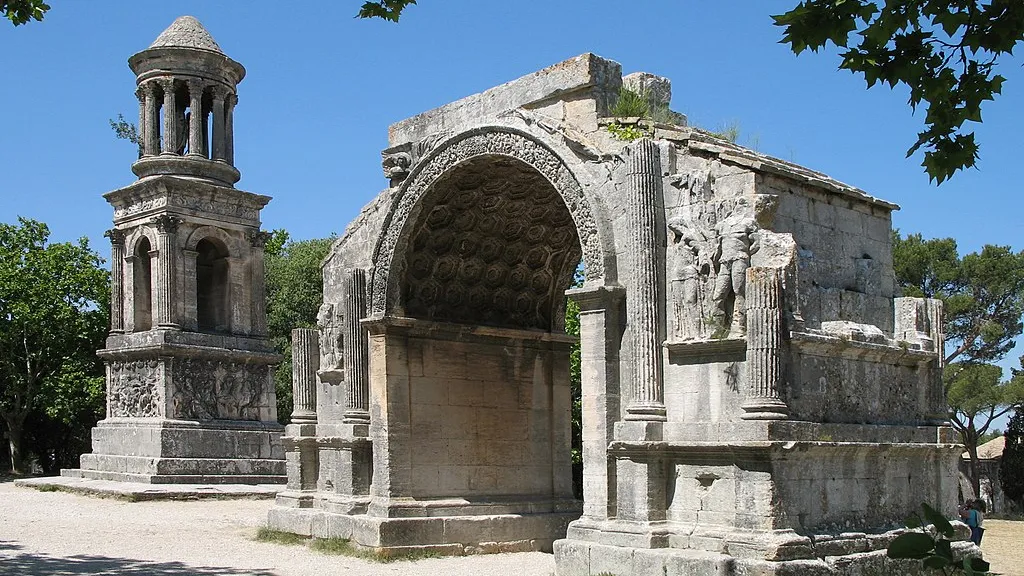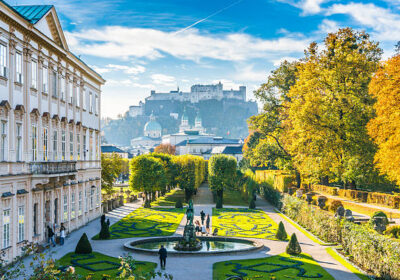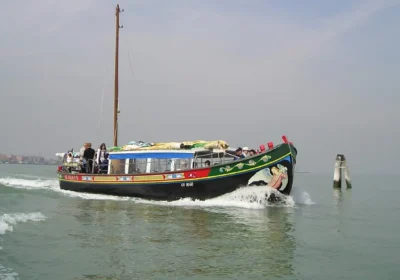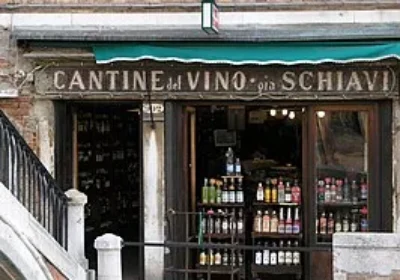Saint-Rémy-de-Provence. It is one of the most striking representatives of typical Provençal towns. Boulevards drowning in the shadows of plane trees, squares decorated with fountains, cozy streets of the old town, as well as the atmosphere that reigns in this city, with its markets and a large number of traditional festivals.
Many monuments of the glorious ancient past have been preserved in and around the city. Among them are the Mausoleum, built in 30 BC, the Arch, built in the time of Emperor Augustus. And nearby are the excavations of Glanum, a thriving ancient city destroyed by Germanic barbarians in 270. Also preserved is the monastery of St. Paul under the Moselle, where Van Gogh lived when he was ill. The city has established the Van Gogh Center for Art and Stay, which displays paintings by the artist and others.
St. Remy de Provence is the birthplace of Nostradamus, the same Nostradamus who predicted “everything that can be predicted and even part of what cannot be predicted.” The most incredible stories are told about Nostradamus: for example, allegedly in his tomb, looted during the French Revolution, found a tablet with the exact date of desecration of the mortal remains of the prophet. In fact, of course, there was nothing of the sort; a soothsayer, that is, a man trying to predict the future, Nostradamus was trying to be, but not a miracle worker. Nostradamus was born into a Jewish family. His ancestors once fled, apparently, from Spain, where the Jews were persecuted as non-Jews. Notary Jaume de Notredam, Nostradamus’ father, came from the papal region of Avignon; his mother was a native of Provence.
The city has a rich cultural and natural heritage, but the Provence surrounding the city also has places worth discovering.
Fontvieille is 14 kilometers to the southwest with its windmills, the 17th century Eglise St. Pierre, and the Châteaux de Barbegal;
Eyguières – 20 km southeast with the ruins of the Schâteaux de Roquemartine (dating from the 12th-13th centuries);
Lamanon – 25 km southeast with the largest plane tree in Europe (a natural monument called “le géant de Provence”), the remains of a cave settlement, Romanesque churches and the two chapels of Saint Jean’s and Saint Denys’);
Orgon (Orgon – with the country museum, where you can see a 14th-century Virgin Mary and a car museum whose collection is one of the finest in France);
Eygalières – 8 km to the east, in a harmony of nature and color that has attracted artists and professional photographers, inspiring them with beautiful creations, where it makes sense to take time to visit the Chapelle St. Sixte. Eygalières looks beautiful when entering it from either side, but the northern entrance to the village is particularly attractive, with the village and olive trees in the foreground against the backdrop of the Alps.
To the north at 6km Maillane is the House of Frédéric Mistral, Nobel Prize winner and founder of Félibrige (a literary and cultural association for the protection and promotion of the Provençal Occitan language and literature), and you can visit his Museum, housed in the house the poet bought and where he lived until his death in 1914. There is a very attractive old café in the village.
Verquières – 8km north, don’t miss the most beautiful fortified totally unique church of Saint Vérédème.
Noves – 10km north-east – home of Lady Laura, with whom Petrarch was in love, Eglise St. Baudile with a 12th century nave.
Graveson – 10 km to the northwest, where you will find the Auguste Chabaud Museum, who was one of the masters of Provençal painting of the 20th century, as well as the Musée des Arômes et des Parfums, the Notre Dame chapel of the 12th century, the Château de Breuil of the 17th century and the church of St. Michel de Frigolet.
Not to be missed 15 km northwest in Boulbon is the feudal castle of the XII century, the Romanesque chapels of Saint Julien in an olive grove and Saint Marcellin of the XII century, a mill of the XVII century, the church of St. Anne and beautiful old houses;
In Barbentane, 18 km northwest, two castles of the XVI and XVII centuries, one of which belongs to the Marquis de Barbentane, museum of Old Mills, butter and flour of Provence.
Abbaye Saint Michel de Frigolet (Abbaye Saint Michel de Frigolet) – 16 km northwest, whose name comes from Ferigoulo, which in Provençal means Thyme. The abbey was founded in the twelfth century and was famous for the production of an elixir from this plant. The chapel of the Abbey is decorated with 14 gilded paintings on the vow of Anne of Austria in 1638.
Tarascon (Tarascon) – 14 km to the west, its castle is one of the best preserved in France and the former residence of Count René of Anjou, King of Provence, the castle houses a collection of remarkable tapestries from 17th century Flanders. You can also visit the Cloître des Cordeliers, the Eglise Sainte Marthe, the Louis XIII style town hall, the House of Tartarin and the Musée des tissus Souleiado. Outside the town you can visit the 12th century Chapelle St. Gabriel. Across the river from Tarascon, the Chateau Beaucaire is a castle where you can see shows with trained eagles and other birds of prey.
And that’s not all you can encounter when traveling through Provence, not far (by Russian standards) from the town of Saint-Rémy-de-Provence.

















